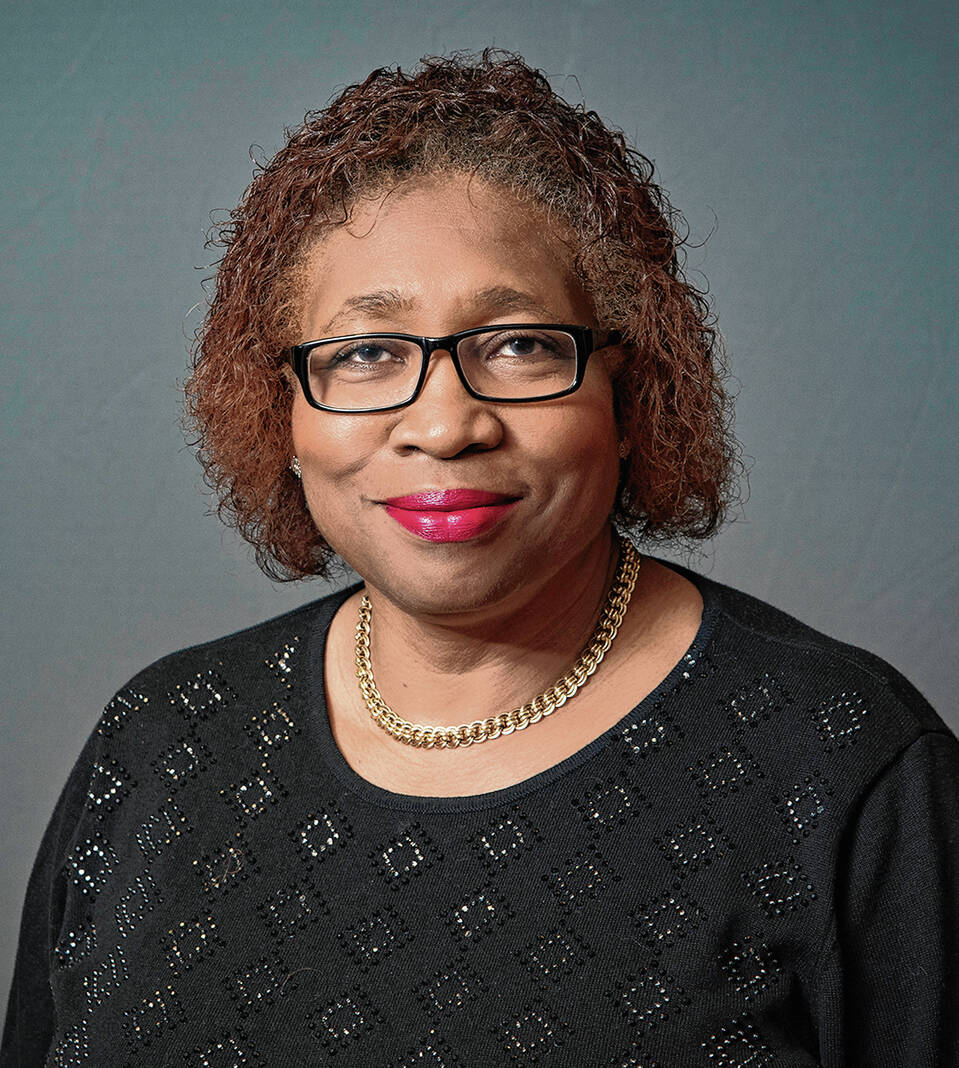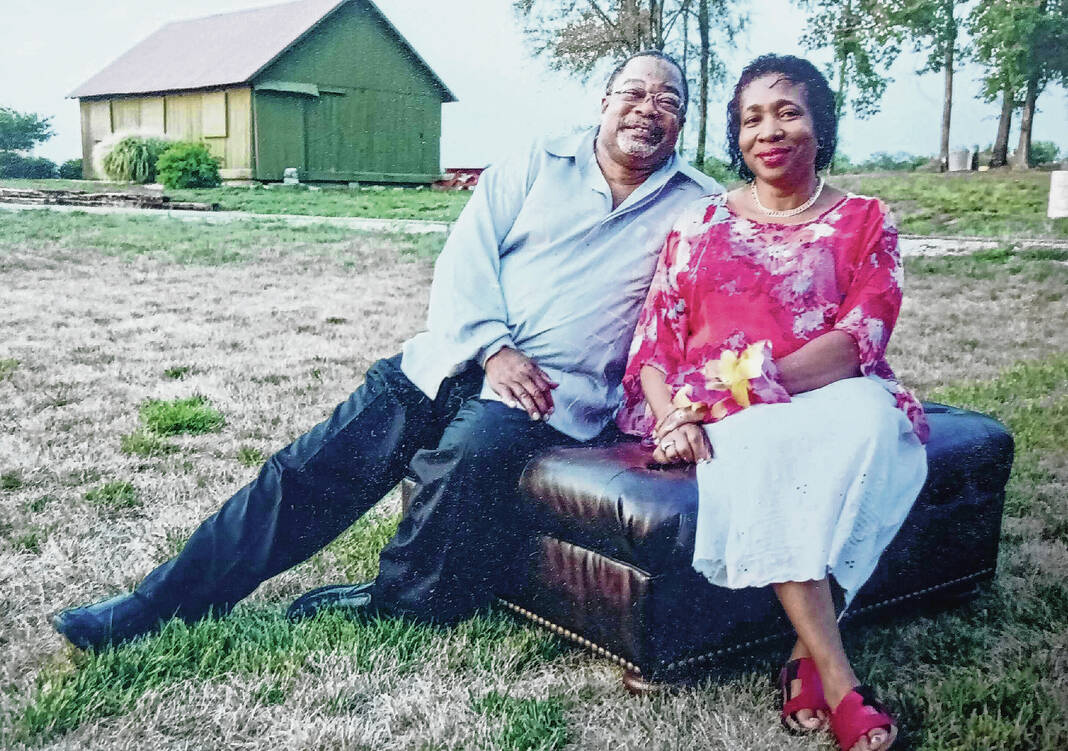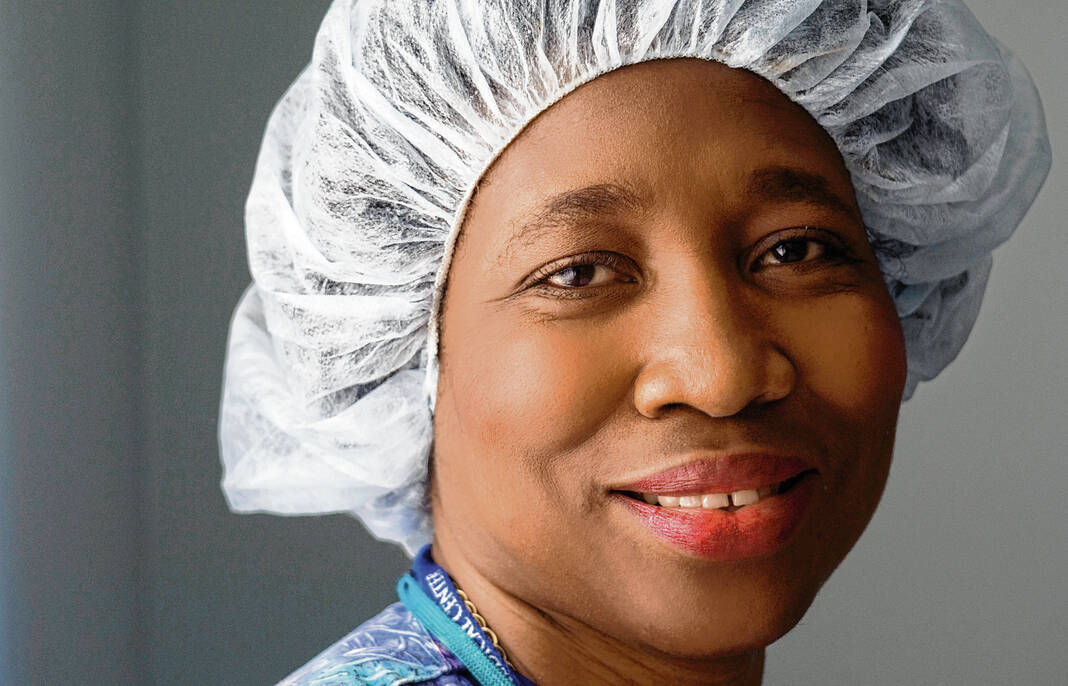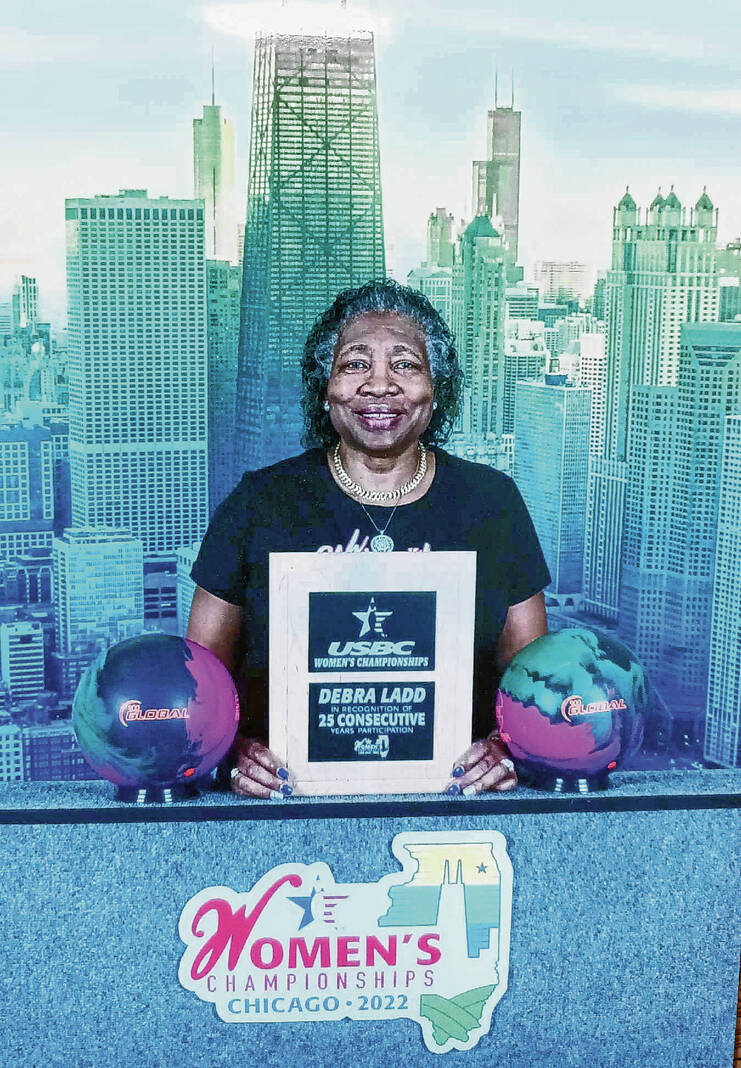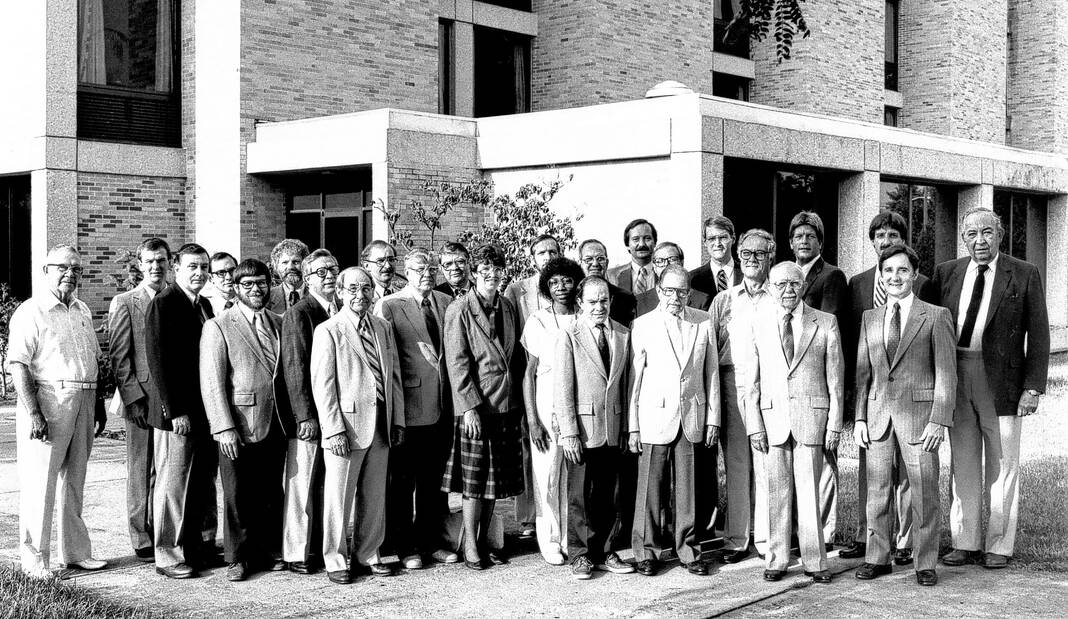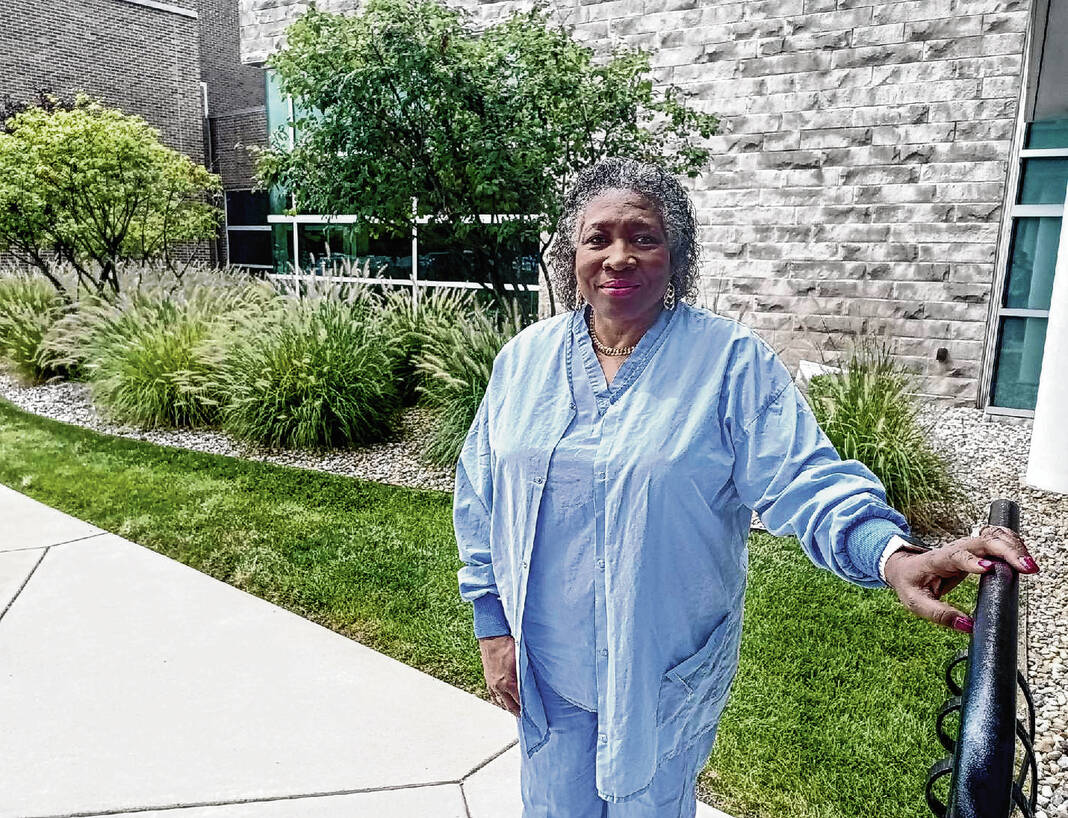As her residency was coming to an end shortly after she was married, Debra Ladd was looking for a place to practice anesthesiology.
Her husband, Troy, became pastor of Little Bethel Missionary Baptist Church in Indianapolis, and she was living in Louisville, so she was commuting back and forth.
One day, she was told two family doctors, Kenneth Bobb and William Blaisdell, at Jackson County Schneck Memorial Hospital were looking for an anesthesiologist. The hospital was located in Seymour, halfway between the two major cities.
Ladd called to set up an interview, and when she arrived at the hospital, Bobb showed her around the facility before taking her to the operating room. He had her put on a green gown to go into the OR, and he administered anesthesia to a patient for a urology procedure. Then he handed her a mask and took off to check on another patient.
“The nurse, she said, ‘I don’t know what you think about this place, but we sure could use an anesthesiologist around here,’” Ladd said.
Bobb returned with the surgeon, and after the surgery was complete, they went to lunch. A real estate agent then showed Ladd around town, and she returned to the hospital and met with administration.
It was quite a unique interview, and Ladd was offered a job to work on contract with the two doctors. On her drive back to Louisville, she said all she could hear was what that nurse said.
On July 7, 1986, Ladd began as Schneck’s first anesthesiologist.
Earlier this year, she retired after 36½ years of service from what’s now known as Schneck Medical Center.
She said many anesthesiologists don’t stay at one place that long, and when asked what made her stay at Schneck, she went back to what that nurse said.
“It was kind of like a mission to stay,” Ladd, 68, said. “I didn’t stay for high pay. I stayed because this community really could use an anesthesiologist here. She said that, and I found that to be very, very true.”
Ladd also made history as Schneck’s first Black doctor and second female doctor. Dr. Rosemary Weir already was on staff when Ladd was hired.
“I want to be a good part of the history of health care in Seymour,” Ladd said.
Ladd is a native of Yazoo City, Mississippi and graduated from Yazoo City High School in 1973.
She said her draw to the medical field traces back to attending a Catholic school around sixth or seventh grade when the priest learned she wanted to be an attorney.
“He said, ‘A lawyer? You’re smart enough, you could be a doctor,’ and I was like, ‘A doctor?’ ‘Yeah, you could be a doctor. We need people to be a doctor,’” Ladd said. “That’s when I started thinking about it. As I went through high school, I thought some more and I’m like, ‘Yeah, I think I’d like to be a doctor.’”
In high school, her counselor told her she always wanted to send someone, particularly a Black student, to Northwestern University in Evanston, Illinois, because she had received her master’s degree from there.
Ladd interviewed with three colleges and wound up choosing Northwestern because it gave her the biggest scholarships. She earned a Bachelor of Arts in chemistry in 1977.
After that, she was admitted to University of Illinois’ medical school, but her family couldn’t afford the tuition. She found a job at the University of Chicago doing research for a while. Then she worked in the lab at Cook County Hospital in Chicago for a couple of years.
In early 1979, her high school counselor called her mother and asked what she was doing. When she learned she wasn’t going to medical school, the counselor told Ladd’s mother the University of Louisville was looking to give tuition scholarships to Black students.
Ladd had to take the Medical College Admission Test again and passed, so she went for an interview at UofL. She was shown around the medical school and was taken to the nearby Speed Art Museum for lunch, where she had the “best strawberry pie I had ever tasted.” She was sold on the pie and the school.
The first two years consisted of classes, and the last two years were rotations at six different Louisville hospitals.
After graduating in 1983, Debra married to Troy on June 4. They met when he was attending Southern Baptist Seminary and one day was at Green Street Missionary Baptist Church when Debra and a friend went there. Debra and Troy talked and later went to eat dinner at a Chinese restaurant, they went on a second date and the rest is history.
Debra did her three years of anesthesiology residency at UofL Hospital. She said she initially planned to become a pediatrician, but that changed after taking anesthesiology as an elective in medical school during her rotation at Norton Hospital for Children.
Dr. Ron Smith liked what he saw when she prepared medications and administered anesthesia to children.
“His words were ‘You’ve caught onto this faster than any student. I don’t have to watch you,’” Ladd said. “I thought, ‘Yeah, but I really want to be a pediatrician.’ That’s what I went to school for because I loved working with children.”
What sold her with becoming an anesthesiologist was during her rotation at Veterans Hospital when she was called to go to UofL Hospital. A Black woman needed a shot for her kidney but wasn’t letting anyone touch her.
“She calmed down as soon as she saw me, and I said, ‘There needs to be some Black people doing this. There needs to be some Black women doing this, too,’” Ladd said. “When I got done, I thought, ‘This is good work, too.’ That’s when I knew I wanted to do that.”
Soon after starting at Schneck, she helped upgrade technology, the first being new anesthetic machines for the operating rooms.
“The Anesthesia Patient Safety Foundation was formed in 1986, the same year I came to this hospital,” Ladd said. “There was new technology in anesthetic machines that would prevent you from turning on any gas without the oxygen flowing. Those machines were actually finally considered unsafe, and there were those machines here when I came. You could turn the nitrous oxide on and the oxygen wouldn’t come on.”
Another technology to emerge was pulse oximeters. Ladd again received cooperation from administration to get those devices in the operating room and respiratory therapy department.
As for her day-to-day job, Ladd said she would look at the surgery schedule and visit with each patient beforehand to explain their anesthesia care, and then she would make rounds and visit them after their procedure.
“I would remind them it only takes a little faith and God actually does some of his best work back here in this operating room,” Ladd said. “That calmed a lot of people down, as well. I tried to be good hands for the good Lord. I tried to work with not a secretive faith. Everybody knows that I believe in God and that God takes care of you through people like me. They weren’t afraid to ask me to pray with them, and I prayed with many.”
Ladd recalled one time when the medical advice she provided to a patient with a congenital condition about the importance of getting a vaccination helped the woman and her family.
Another time, she finally got a man to follow doctor’s orders and he wound up losing 80 pounds, quitting smoking, no longer was diabetic and was off of blood pressure medication.
She even helped deliver a baby once before the on-call doctor arrived at the hospital.
“We are doctors, too, and we take care of all of you,” Ladd said. “We still have to make sure your heart is beating, make sure you’re getting enough oxygen, make sure your brain is going to survive this because unconsciousness affects your brain, as well.”
Ladd remained an independent contractor until 1997, and she became a hospital employee Nov. 18, 2002.
Over time, the number of anesthesiologists at Schneck grew as high as eight. With one returning to Schneck earlier this year, Ladd said that gave them a full staff, so she decided it was the right time to retire.
She said that was a very hard decision to make because she developed a lot of friendships with coworkers and patients.
She recalled the support she received when she gave birth to her first son at Schneck and he died three days later due to hypoplastic left heart syndrome with aortic atresia, a congenital heart malformation.
“My home was full of flowers from the community — full,” Ladd said. “There was so much food, I had a sign on my door ‘Please, no more food.’”
When her mom visited for two weeks, the mailbox was full every day.
“My mom read every letter, every card,” Ladd said. “Most of them were ‘You weren’t my doctor, but I was in the room with a patient that was and you were very kind to me to check on me, as well.’ ‘You weren’t my doctor, but you took good care of my mom.’ There were so many sacks of mail. That helped my parents and me know that I was in the right place.”
Ladd also made a lot of friendships through bowling. She earned an award for raising money for cystic fibrosis through a bowling event in 1987, was named Seymour USBC Female Bowler of the Year in 2014 and was recognized for 25 consecutive years of participating in the USBC Women’s Championships in 2022.
In retirement, Ladd said she is continuing with bowling. Plus, she’s enjoying spending more time with her family, including her husband, three children, parents, granddaughters and others.

